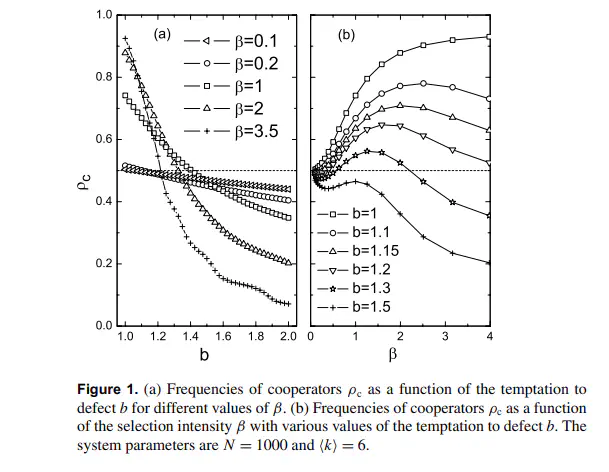
Abstract
Most previous studies have focused on the effect of fertility selection on the evolution of cooperation. In fact, the payoff to an individual is in terms of the effect on fitness including survival and fecundity. In this paper, we introduce a model of strategy evolution with network dynamics based on mortality selection. The intensity β of mortality selection has a nontrivial role in the evolution of both cooperation and network structure. At a defector’s temptation b=1, the system gains its maximal cooperation level at β→∞. Increasing b decreases βmax for the maximal cooperation level. For network structure, the average degrees of strategists and the self-organization of clusters are investigated to understand the connections of strategists and their effects on cooperation level. Furthermore, we introduce the cooperating k-core to describe the tight level of the cooperator cluster. Cooperation is enhanced by forming a tight cooperating k-core at moderate β, but there is a collapse of the cooperating k-core when β is too large. The results indicate that cooperators outside the cooperating k-core play an important role in maintaining that core to ensure a high cooperation level. So the formation and maintenance of the cooperating k-core coordinate with each other at maximum cooperation level at a specific value of β.